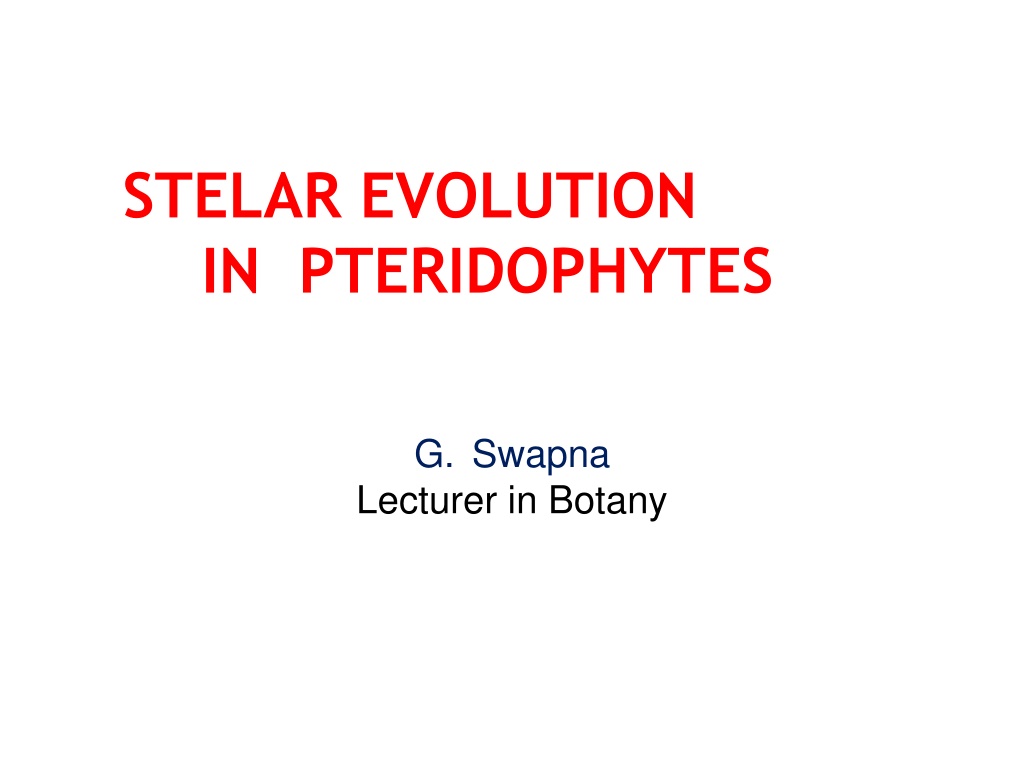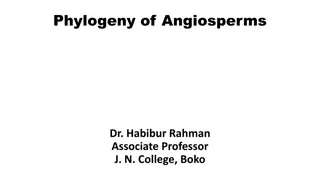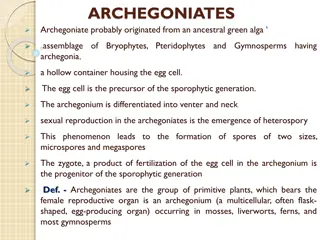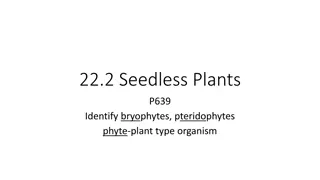Evolution of Steles in Pteridophytes: An Overview
This detailed presentation explores the evolution of steles in pteridophytes, discussing basic types such as protostele and siphonostele, and specific variations like haplostele, actinostele, and solenostele. The origin of siphonostele and the evolutionary progression of vascular tissues are also elucidated, providing valuable insights into the structural development of primitive plants.
Download Presentation

Please find below an Image/Link to download the presentation.
The content on the website is provided AS IS for your information and personal use only. It may not be sold, licensed, or shared on other websites without obtaining consent from the author. Download presentation by click this link. If you encounter any issues during the download, it is possible that the publisher has removed the file from their server.
E N D
Presentation Transcript
STELAR EVOLUTION IN PTERIDOPHYTES G. Swapna Lecturer in Botany
BASIC TYPES OF STELES PROTOSTELE Central Xylem, surrounding Phloem. No Pith. Primitive SIPHONOSTELE Protostele with Central Pith. Advanced
TYPES OF PROTOSTELES Haplostele Central circular Xylem. Rhynia Actinostele Star shaped Xylem. Ex. Psilotum, Lycopodium serratum Plectostele- Xylem broken into many parallel plates. Ex. L. clavatum Mixed Protostele Small irregular patches of Xylem. Ex. L. cernuum
TYPES OF SIPHONOSTELES Cladosiphonic No leaf traces Phyllosiphonic with leaf traces Ectophloic Phloem outside xylem . Ex. Equisetum Amphiphloic Outer and inner rings of Phloem, Xylem central. Ex. Marselia
TYPES OF SIPHONOSTELE Solenostele Non-overlapping leaf traces. Ex. Adiantum Dictyostele- Overlapping leaf traces Ex. Ophioglossum Polycyclic Two or more concentric rings of vascular tissue. Complex type. Ex. Pteris
Origin of Siphonostele Intra stelar Origin Pith developed from inner xylem cells. Extra stelar Origin Pith formed by outer cortical cells which entered inside through leaf gaps.























